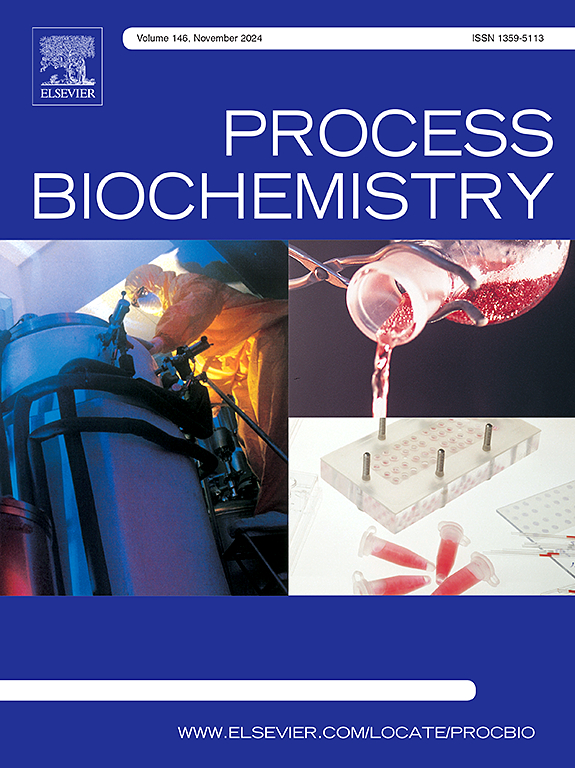Oceanobacillus in high-temperature Daqu: Taxonomic diversity, metabolic characteristics and biofortification effect
IF 3.7
3区 生物学
Q2 BIOCHEMISTRY & MOLECULAR BIOLOGY
引用次数: 0
Abstract
High-temperature Daqu (HTD) is a critical component in Jiang-flavor Baijiu production, supplying flavor precursors, enzymes, and diverse microorganisms. Notably, HTD harbors Oceanobacillus, an ecological generalist whose role in the microecosystem remains to be defined. Here, we first identified 21 amplicon sequence variants (ASVs) belonging to six Oceanobacillus species in 20 HTD samples through 16S rRNA gene sequencing. Subsequently, representative strains of eight Oceanobacillus species were selectively isolated from HTD using predicted culture media. These strains exhibited potent enzymatic activities including cellulase and neutral proteinase, alongside diverse metabolic capabilities. Furthermore, we evaluated the impact of Oceanobacillus caeni, the predominant species, on HTD fermentation. Compared to the control, the relative abundance of Oceanobacillus caeni in the biofortified HTD increased significantly, from 3.82 % to 10.25 %, with the biomass of Oceanobacillus caeni surged from 5.15 × 108 to 2.95 × 109 copies/g. The activities of cellulase and neutral proteinase in the biofortified HTD escalated to 1.20 U and 57.14 U, respectively. The levels of volatile pyrazines and phenols in the biofortified HTD increased by 1.45 and 1.55 times, respectively. Levels of other volatiles including isovaleraldehyde, furfural, isobutyric acid, phenylacetone, ethyl palmitate, and 1,2-dimethoxybenzene saw respective increases of 3.77, 2.26, 1.94, 2.21, 5.21, and 2.27 times. This study sheds light on the role of Oceanobacillus in HTD, offering a theoretical foundation for improving Daqu quality.
求助全文
约1分钟内获得全文
求助全文
来源期刊

Process Biochemistry
生物-工程:化工
CiteScore
8.30
自引率
4.50%
发文量
374
审稿时长
53 days
期刊介绍:
Process Biochemistry is an application-orientated research journal devoted to reporting advances with originality and novelty, in the science and technology of the processes involving bioactive molecules and living organisms. These processes concern the production of useful metabolites or materials, or the removal of toxic compounds using tools and methods of current biology and engineering. Its main areas of interest include novel bioprocesses and enabling technologies (such as nanobiotechnology, tissue engineering, directed evolution, metabolic engineering, systems biology, and synthetic biology) applicable in food (nutraceutical), healthcare (medical, pharmaceutical, cosmetic), energy (biofuels), environmental, and biorefinery industries and their underlying biological and engineering principles.
 求助内容:
求助内容: 应助结果提醒方式:
应助结果提醒方式:


